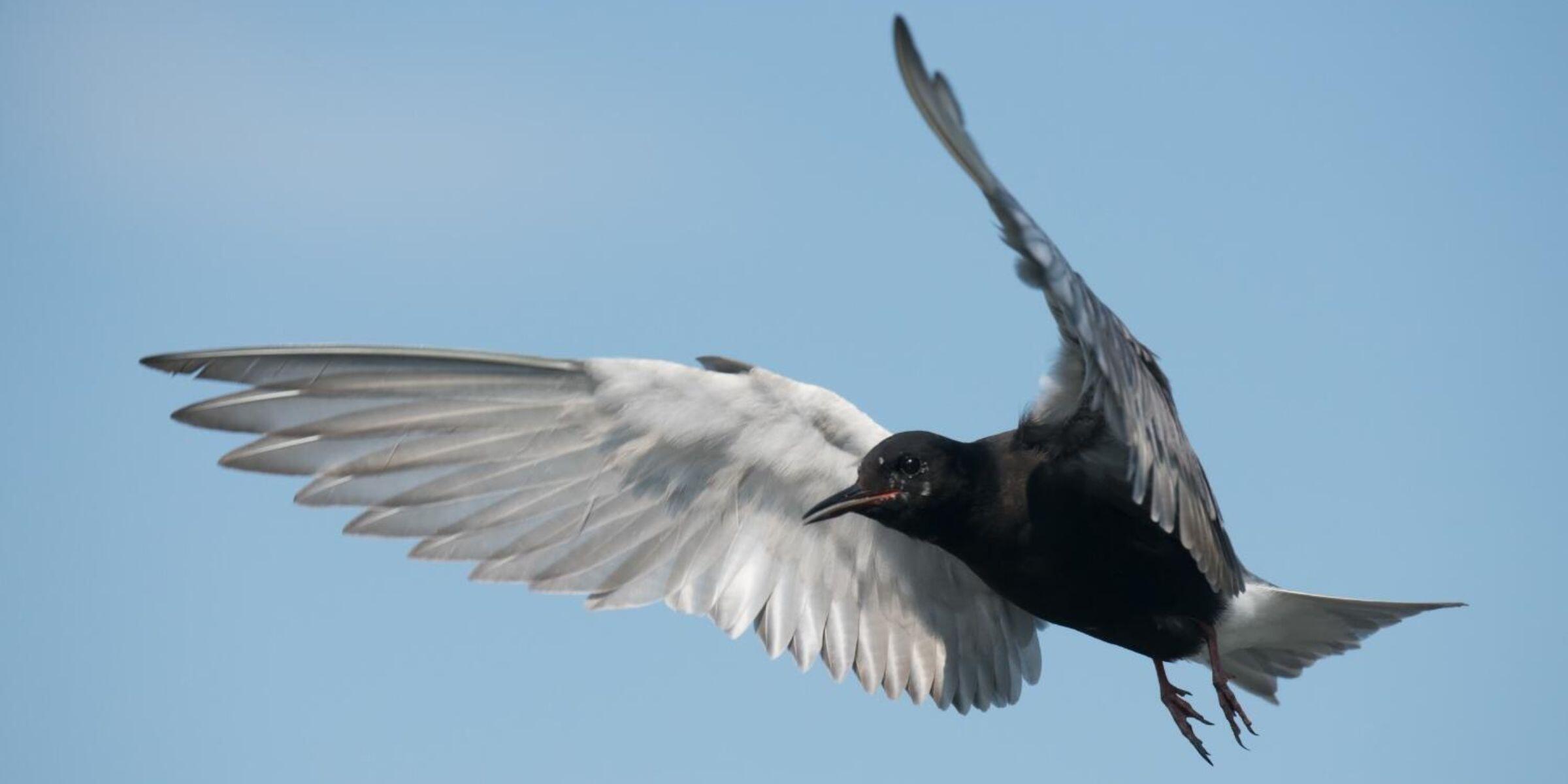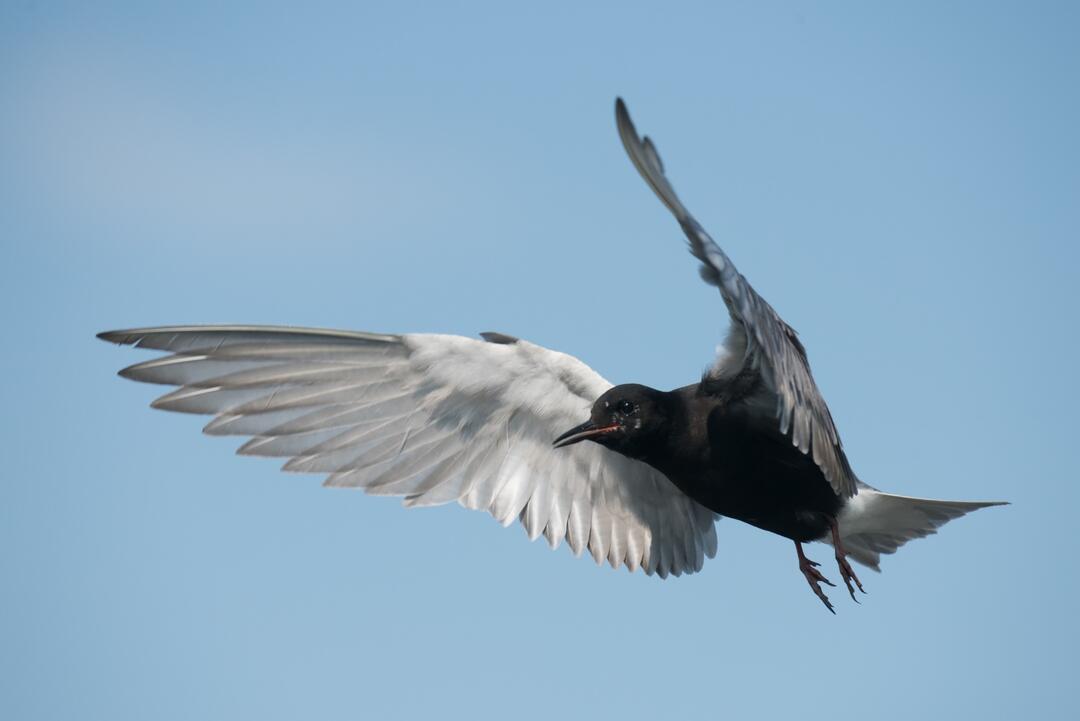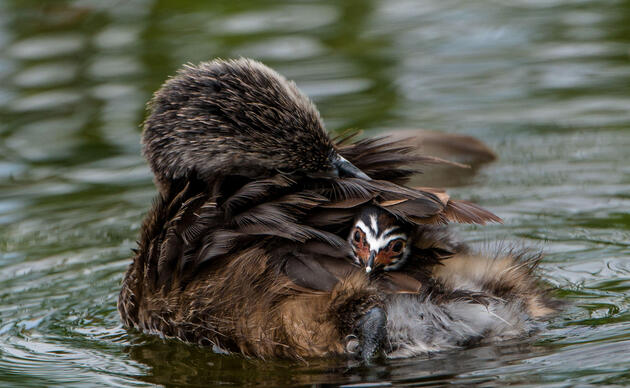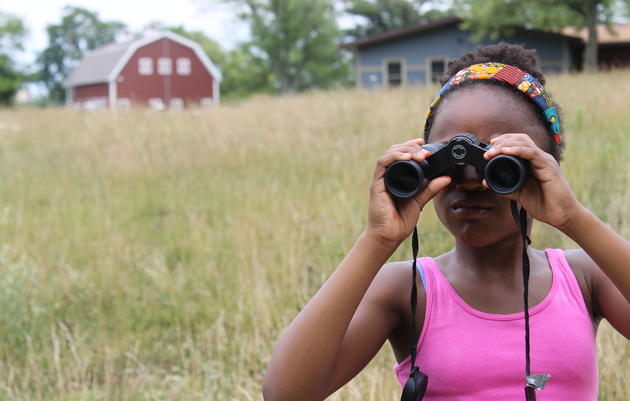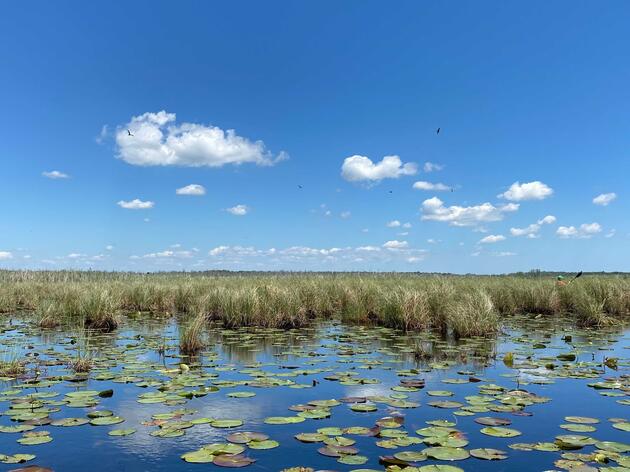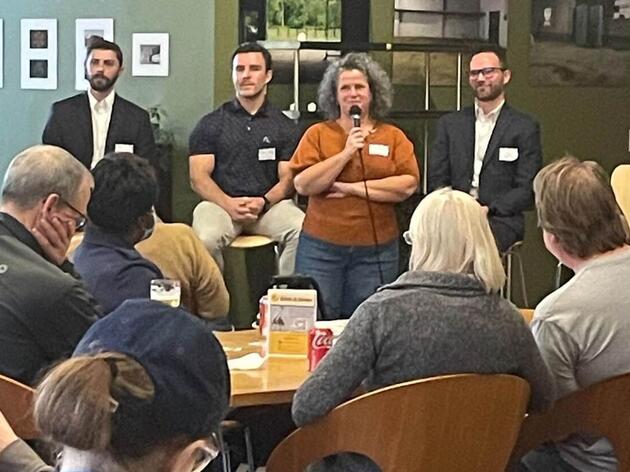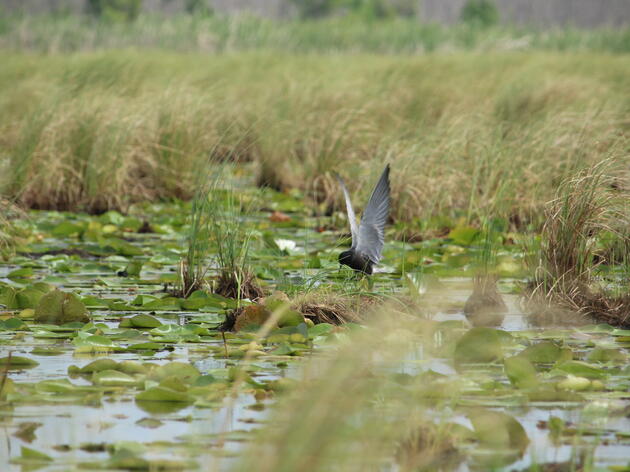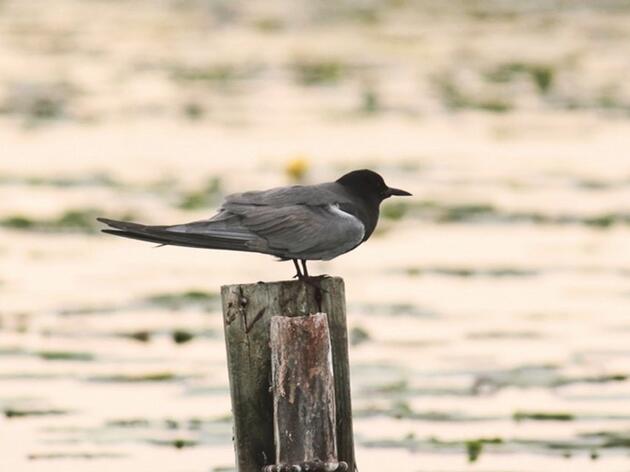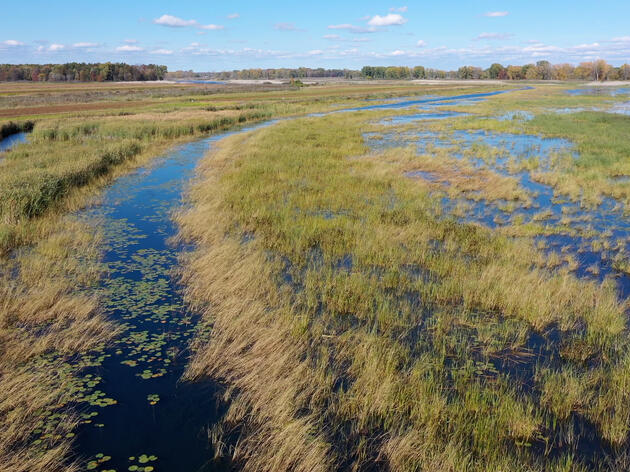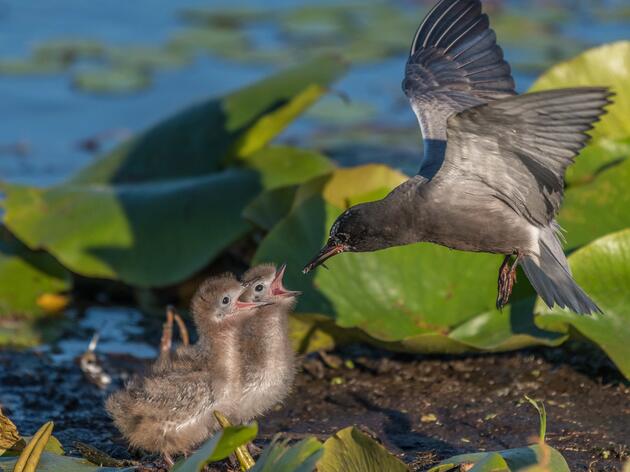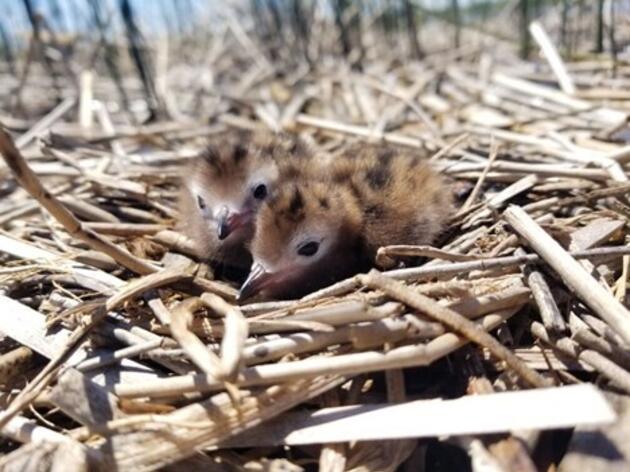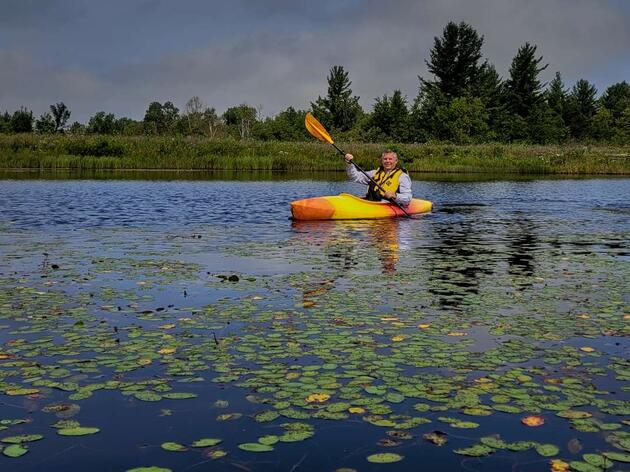Protecting Birds in the Detroit River and the St. Clair Flats Region
Nearby the highly populated Detroit metropolitan area are the Detroit River and the St. Clair Flats— the largest freshwater delta in the world. Comprised of highly valuable wetlands, the Detroit River and the St. Clair Flats region provides important habitat for breeding, migrating, and wintering waterfowl as well as vulnerable wetland species like the American Bittern, Black Tern and Marsh Wren.
After years of urbanization and industrialization, the region has undergone a historic loss of wetlands, threatening the species that rely on them for resting, nesting and feeding their young. Now, Audubon Great Lakes is working to restore the region’s wetlands for the benefit of vulnerable marsh birds and local communities.
Working in the Areas Where Birds Need Us Most
The Detroit River & the St. Clair Flats region has been identified by Audubon scientists as one of the 12 most important coastal wetland regions across the Great Lakes that are most important to conserve or restore for vulnerable marsh birds. Audubon Great Lakes is working with partners in each of these priority regions to coordinate landscape-scale bird monitoring and habitat restoration.
Explore Audubon’s Vision: Restoring the Great Lakes for Birds and People to see Audubon's plans to address the biggest threats facing birds and people.
Our Restoration Work
The Detroit River and the St. Clair Flats region includes several protected natural areas including the St. Clair Flats State Wildlife Area, home to the largest colony of Black Terns in Michigan. Audubon Great Lakes, in partnership with the Michigan Department of Natural Resources and Detroit Audubon, has spearheaded an effort to protect and enhance St. Clair Flats to ensure the long-term survival of this elegant marsh bird species.
The Black Tern colony at St. Clair Flats is facing habitat degradation caused by invasive plants, fluctuating water levels, and storm events caused by climate change. Native to the region, Black Terns build their nests atop floating vegetation. Wetland restoration work is being done to remove invasive plants and to create floating mats of vegetation to improve Black Tern nesting habitat. This habitat management will also benefit secretive marsh birds and waterfowl. Black Tern, secretive marsh bird, and waterfowl surveys are being conducted at St. Clair Flats to measure how birds respond to these management efforts.
Research is also underway at St. Clair Flats to determine what is causing the Black Tern population to decline in Michigan. To better understand Black Tern movements and migration patterns, Audubon researchers have used small tracking devices called NanoTags. In order to pick up signals from these tiny radio transmitters, researchers built a 20-foot Motus Tower at St. Clair Flats, Lake St. Clair Metropark, and the City of New Baltimore. Detroit Zoological Society erected a Motus tower in support of this project, at Belle Isle State Park, in Detroit.
History of the Region
Lake St. Clair, St. Clair Flats State Wildlife Area and the Detroit River are recognized as Audubon Important Bird Areas (IBAs) for the sprawling wetland habitat they provide to vulnerable bird species. Lake St. Clair is known for supporting great congregations of Canvasbacks, Redheads, and Greater Scaup. St. Clair Flats is comprised of over 25,000 acres of bulrush, cattails, and wetland grasses which make up highly important habitats for breeding, migrating, and wintering waterfowl, and very high densities of rare marsh-nesting species including American and Least Bitterns, Forster's and Black Terns, and Marsh Wren. The Detroit River is known for its outstanding migrant and wintering waterfowl, migratory landbirds, and breeding Common Terns.
The Detroit River was named an EPA Area of Concern (AOC), following decades of degradation from pollution caused by industrial waste and stormwater runoff.
Years of industrialization and urbanization have led to the loss of a majority of the wetlands across the region, including wetlands losses of 85 percent in St. Clair County, 87 percent in Macomb County, and 92 percent loss in Wayne County. The remaining wetlands are critically important for birds and local communities.
Project Partners & Supporters
Audubon Great Lakes is grateful to project partners and supporters who make our work possible.
Project Partners:
Supporters:
Audubon’s work in the Detroit River & the St. Clair Flats region is supported by the MI DNR Wildlife Habitat Grant Program, U.S. Fish and Wildlife Service, and Upper Mississippi Great Lakes Joint Venture.
Request for Bids
Project: Mowing Dense Cattail and Phragmites Vegetation Location: St. Clair Flats State Wildlife Area – East Marsh Unit (zones 31-40’s) Project Performance Period: July 15, 2023 – September 8, 2023 Bids and Site Visit: All bids are to be submitted on a “PER ACRE" unit-price basis, a bid for each project area and a combined bid. If the Contractor would like a site visit prior to submitting a bid for this Project, please contact Andy Hinickle (Audubon Great Lakes, 607-342-7328, Andrew.Hinickle@audubon.org) or John Darling (Michigan Department of Natural Resources, 810-459-1197, DarlingJ@michigan.gov). Bids should be submitted using the bid sheet provided. Bids due by Friday, May 26th
Our Projects in the Detroit River and St. Clair Flats Region
Wild Indigo Nature Explorations
Building lasting relationships between urban communities of color and their local natural areas.

